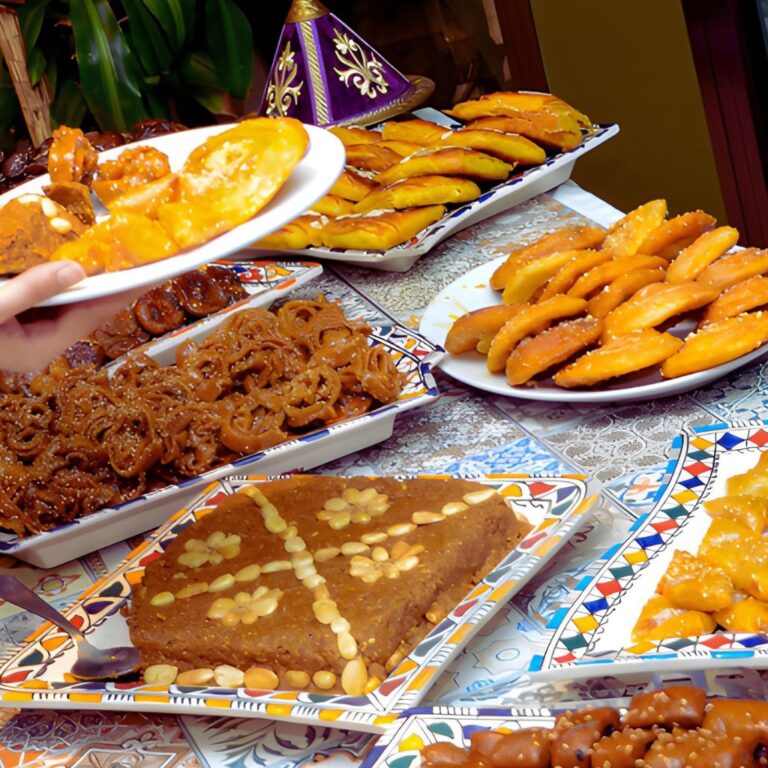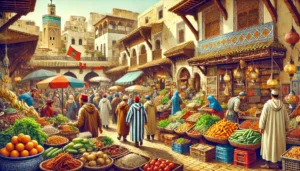Moroccan cuisine, renowned for its intricate blend of flavors and spices, offers an array of traditional Moroccan dessert recipes that are as rich in history as they are in taste. From the flaky layers of baklava to the unique textures of traditional street foods like sfenj, each dessert tells a story of cultural intersections and culinary evolution. Let’s delve into some of the best food in Morocco that not only highlight the culinary artistry of Moroccan cuisine but also its cultural heritage.
1. Baklava with a Moroccan Twist

Originating from the palaces of the Ottoman Empire, baklava found its way into Moroccan hearts with a local twist. In Moroccan cuisine, this beloved dessert is crafted with layers of flaky phyllo dough, brimming with almonds—a favored local nut, and perfumed with orange blossom water. It’s generously soaked in a syrup infused with cardamom, a spice that adds a hint of the exotic to the sweet, sticky pastry.
Cultural Note: In Moroccan cuisine culture, baklava is a festive treat, commonly served during Eid and at large family gatherings, paired perfectly with mint tea, symbolizing hospitality.
2. Chebakia: The Beloved Ramadan Treat
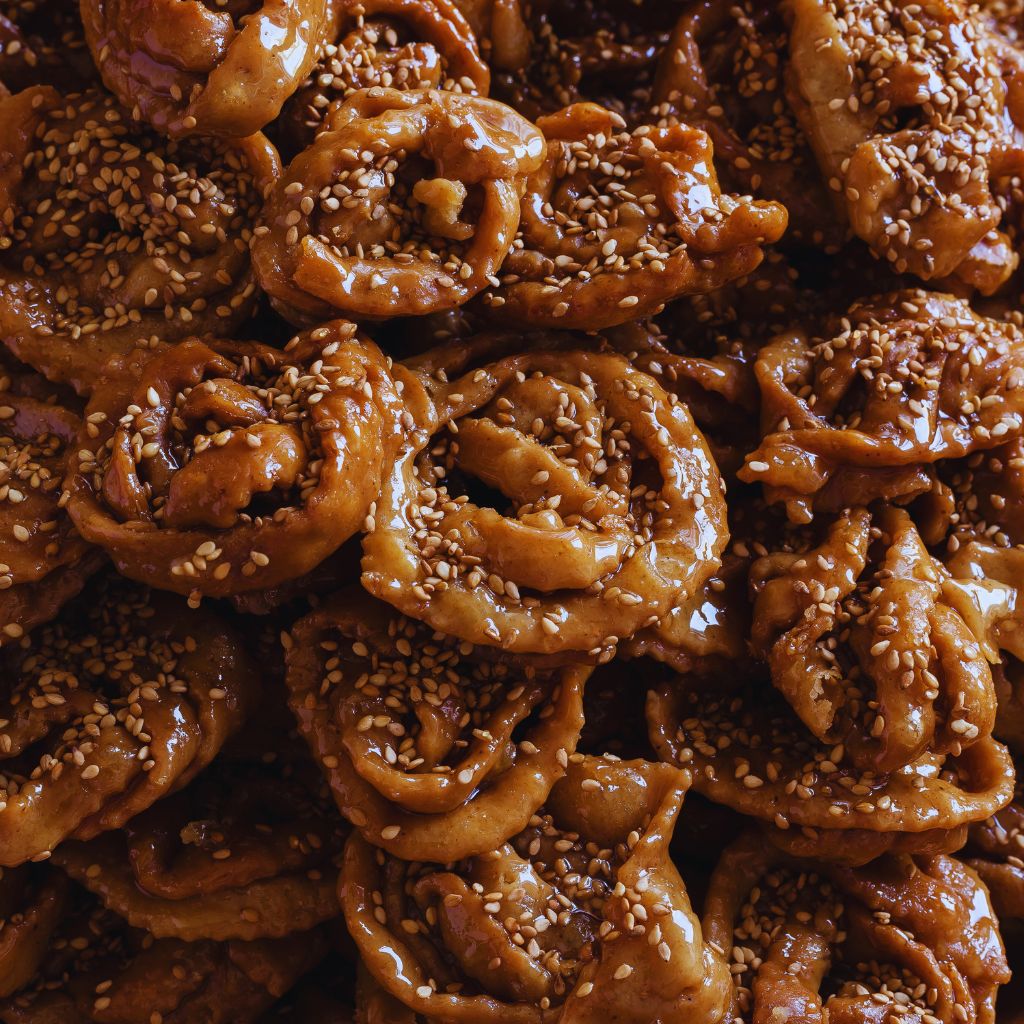
Chebakia, a flower-shaped cookie, is especially popular during Ramadan. The labor-intensive preparation involves crafting dough spiced with anise, cinnamon, and saffron, which is then fried and soaked in honey. This dessert is not just about taste; it’s a ritual, reflecting the communal spirit in Morocco food culture, with families coming together to prepare this treat.
3. Meskouta: Orange Cake Perfection
Meskouta, a moist and aromatic orange cake, is a staple in traditional Moroccan dessert recipes, often served with tea or as a dessert after a family meal. Its preparation is straightforward, making it a popular choice for an introduction to Moroccan baking.

4. Kaab el Ghazal (Gazelle Horns)

These crescent-shaped cookies are a fine example of the precision in Moroccan pastry. Named for their delicate shape, they feature an almond paste filling enriched with cinnamon and orange blossom water, enveloped in a thin, crisp pastry. They are most commonly served at weddings and significant celebrations, signifying joy and festivity in Moroccan cuisine culture.
5. Sfenj: Moroccan Doughnuts
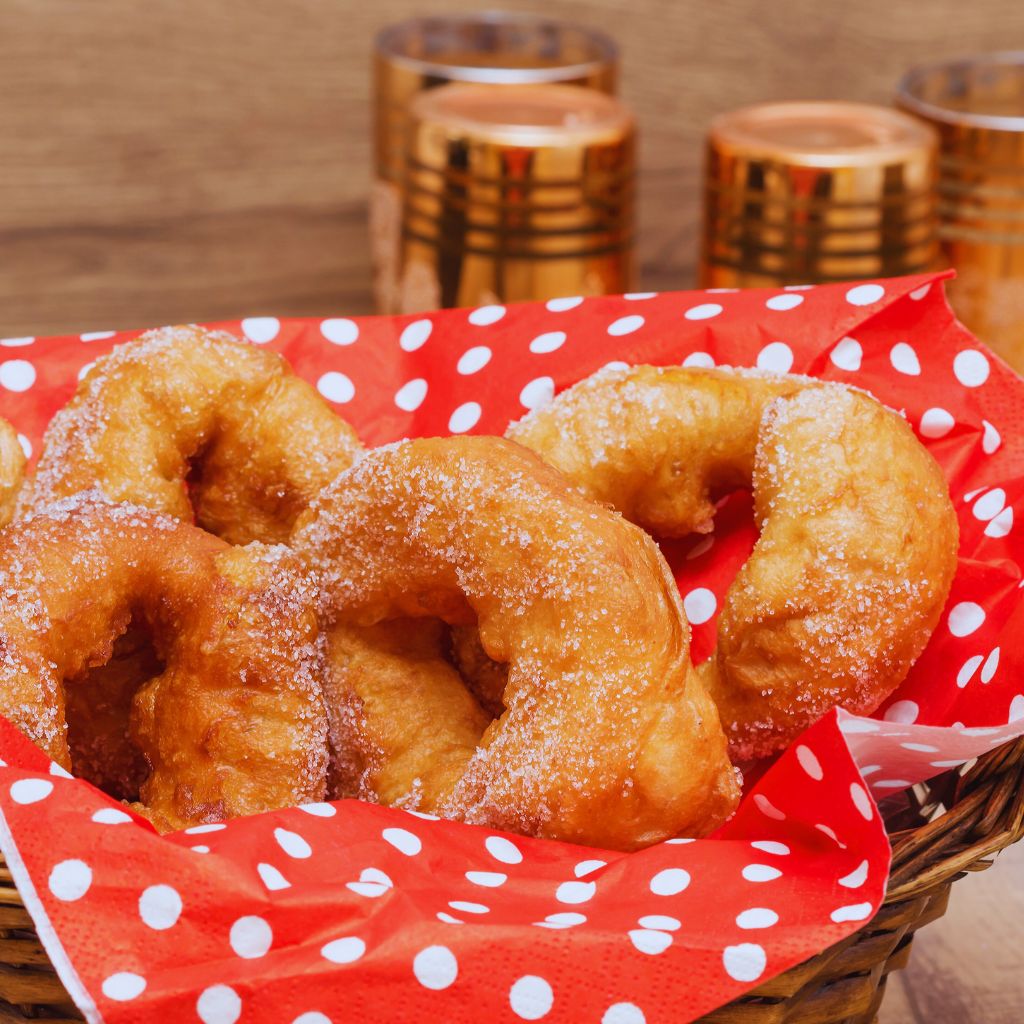
Sfenj are the epitome of Moroccan street food. These airy, yeast-leavened doughnuts are traditionally enjoyed plain, which highlights their chewy texture and slightly tangy flavor. They can be seen hanging from stalls in bustling markets, often dipped into a cup of sweet tea or coffee, providing a simple yet satisfying treat in Moroccan cuisine.
6. Briouats with Almond and Honey

Briouats are small, triangular or cylindrical pastries filled with a variety of ingredients. The almond and honey variant is particularly popular as a dessert in Moroccan cuisine. These delicate pastries are made with thin sheets of dough, usually warqa, filled with a mixture of ground almonds, cinnamon, and sometimes orange flower water, then fried or baked until crispy.
Once cooked, the briouats are often dipped in hot honey mixed with a touch of rosewater, giving them a glossy finish and an aromatic sweetness that is truly indulgent. They are commonly served during festivities and are a staple at Moroccan weddings and celebrations, showcasing the Moroccan cuisine culture’s flair for combining textures and flavors in small, elegant bites.
These revisions ensure that the list offers a diverse array of Moroccan desserts, highlighting both popular treats and special occasion delicacies, while avoiding repetition and enhancing the cultural content of the guide.
7. M’hanncha: The Snake Cake
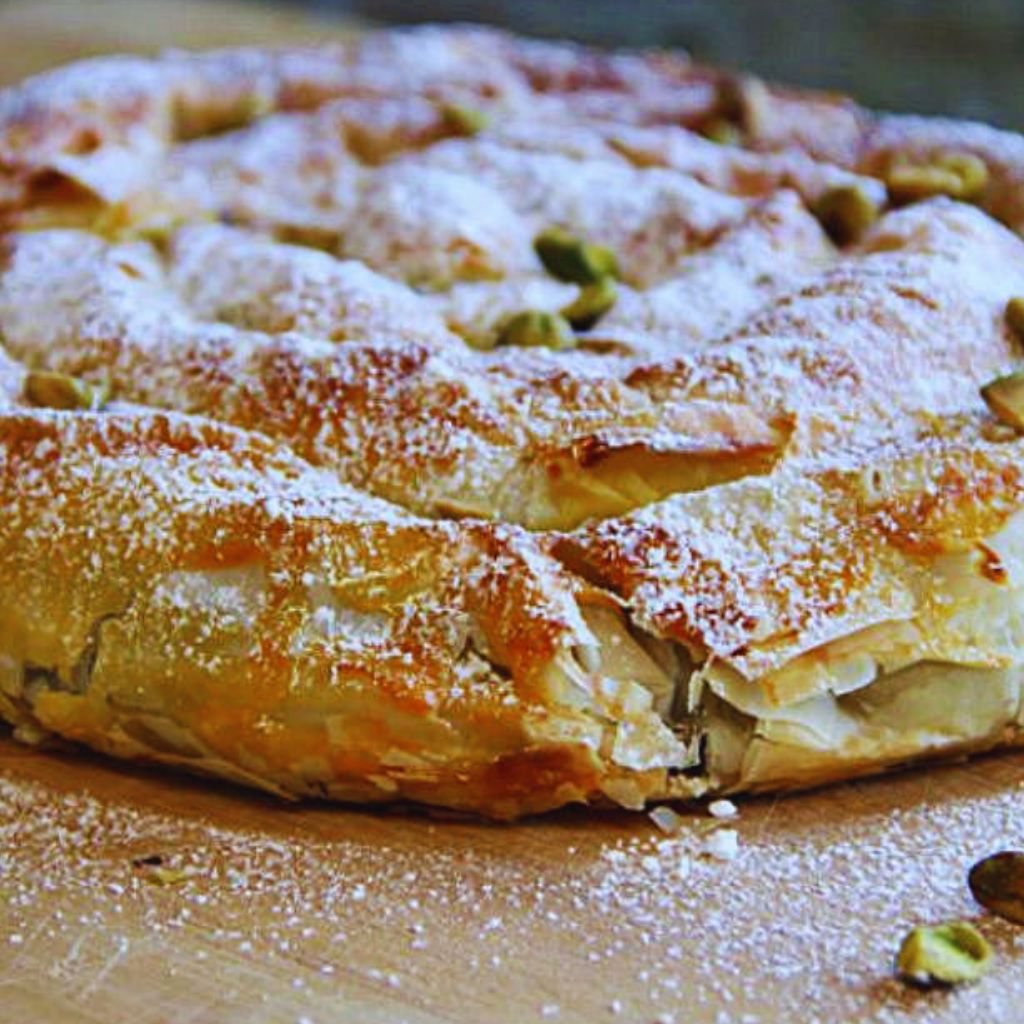
M’hanncha, known as “snake cake,” is a visually stunning dessert. This coiled pastry, filled with a fragrant almond paste, is a celebration of both flavor and form, typically served at special occasions where it takes center stage on the dessert table in Moroccan cuisine culture.
8. Ghoriba: Moroccan Shortbread Cookies
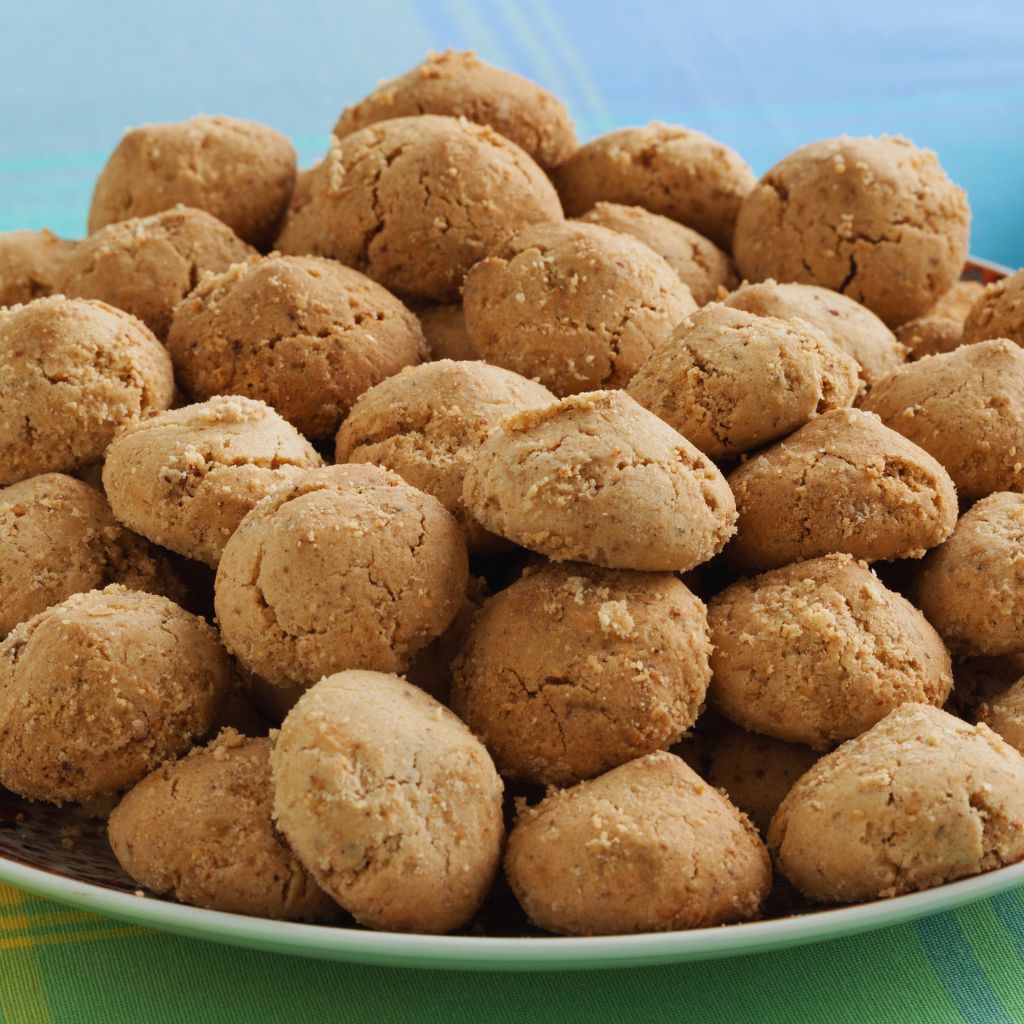
Ghoriba, often referred to as the Moroccan shortbread, offers a sandy texture and is known for its cracked surface. These cookies are a humble yet essential part of Morocco food culture, showcasing the simplicity and elegance of the nation’s pastry techniques.
9. Sellou: A Nutritious No-Bake Dessert
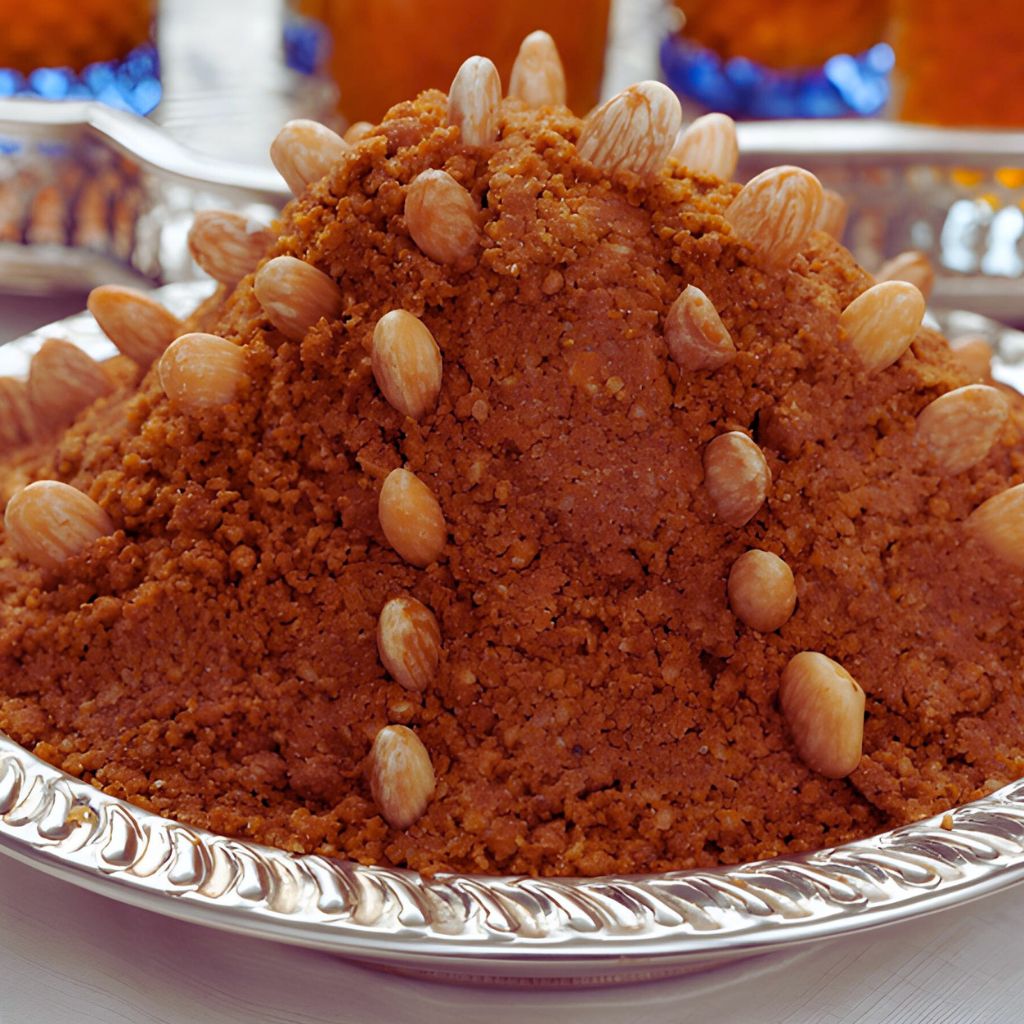
Sellou is a dense, no-bake dessert packed with toasted flour, nuts, and seeds, bound together by honey. It’s highly nutritious and often associated with Ramadan, consumed for its energy-boosting properties. Sellou is a testament to the Moroccan approach to desserts that are not only delicious but also wholesome.
10. Zlabia: Moroccan Funnel Cakes
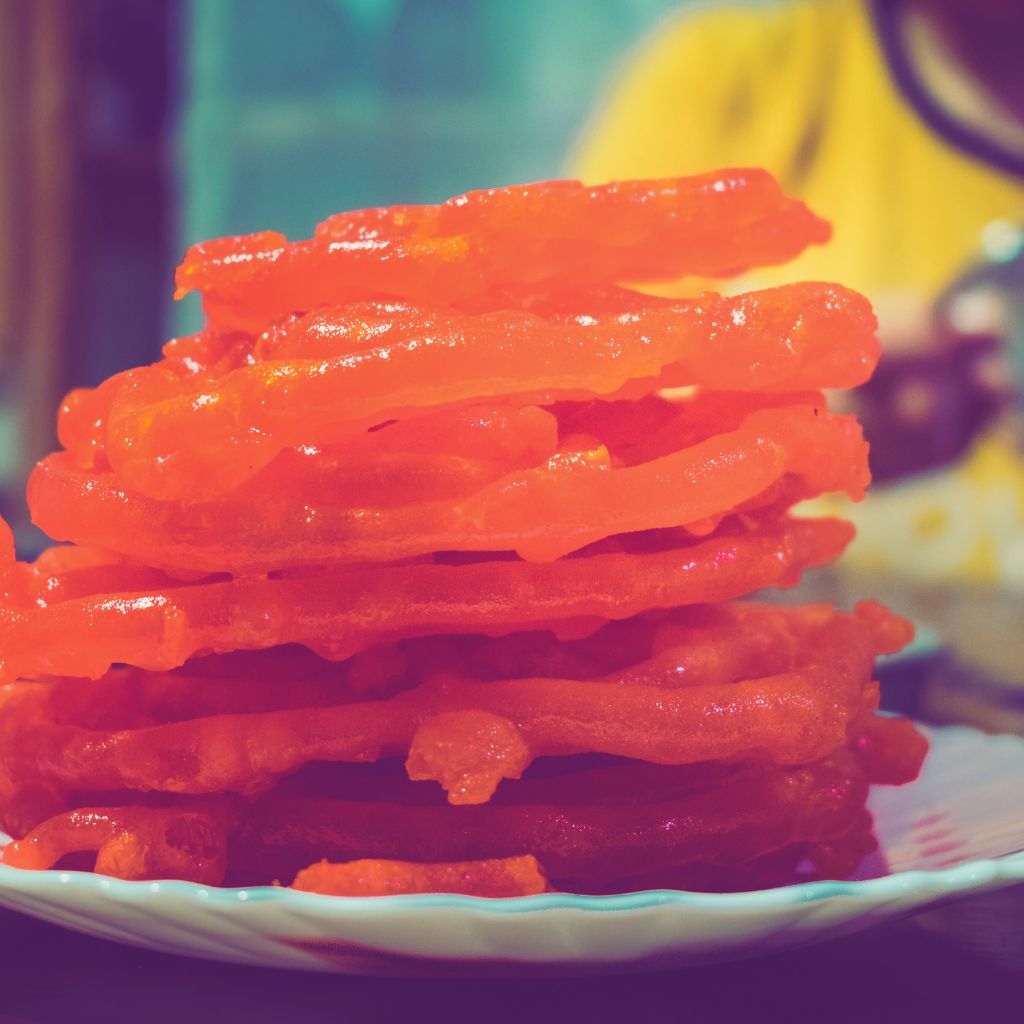
Zlabia are intricate, funnel-shaped cakes known for their bright colors and sweet, syrupy coating. Often associated with Ramadan, these treats are a delight, symbolizing celebration and the joy of community gatherings.
These traditional Moroccan dessert recipes offer a glimpse into the rich tapestry of Moroccan cuisine. From communal cooking traditions to the everyday delight of a simple cookie, these recipes offer a sweet slice of Moroccan life. Whether you’re exploring the bustling markets of Marrakech or baking in your kitchen, these desserts invite you to savor a piece of Moroccan heritage.
Frequently Asked Questions (FAQs)
What are the most popular Moroccan desserts?
Some of the most popular Moroccan desserts include chebakia (honey-coated sesame cookies), kaab el ghazal (almond-filled crescent cookies), and meskouta (orange cake). These traditional Moroccan dessert recipes are beloved for their unique flavors and textures.
Are Moroccan desserts very sweet?
Many Moroccan desserts are quite sweet, often using honey or sugar syrup. However, the sweetness is usually balanced with aromatic spices, nuts, and sometimes a touch of bitterness from ingredients like orange peel.
What spices are commonly used in Moroccan desserts?
Common spices in Moroccan cuisine, especially in desserts, include cinnamon, cardamom, anise, and saffron. Orange blossom water and rose water are also frequently used to add fragrance and flavor.
Can I make Moroccan desserts without specialty ingredients?
While some traditional ingredients enhance the authenticity of Moroccan desserts, many recipes can be adapted using more common ingredients. For example, regular flour can often be substituted for semolina, and orange extract can replace orange blossom water in a pinch.
How does Moroccan cuisine differ from other North African cuisines?
While Moroccan cuisine shares similarities with other North African cuisines, it’s known for its extensive use of spices, unique flavor combinations, and the influence of various cultures including Berber, Arab, and French. The best food in Morocco often reflects this diverse culinary heritage.
What is the significance of tea in Moroccan food culture?
Mint tea is an integral part of Morocco’s food culture. It’s often served with desserts and is considered a symbol of hospitality. The ritual of preparing and serving tea is an important aspect of Moroccan social interactions.
Are there any healthier options among Moroccan desserts?
Yes, some Moroccan desserts can be considered healthier options. For example, sellou is a no-bake treat made with nutritious ingredients like almonds and sesame seeds. Many traditional recipes can also be adapted to reduce sugar or use healthier alternatives.
How has Moroccan cuisine culture influenced its desserts?
Moroccan cuisine culture emphasizes hospitality, communal dining, and the use of fresh, local ingredients. This is reflected in desserts through the prevalence of sharing plates, the use of seasonal fruits, and the tradition of preparing elaborate sweets for special occasions and festivals.


